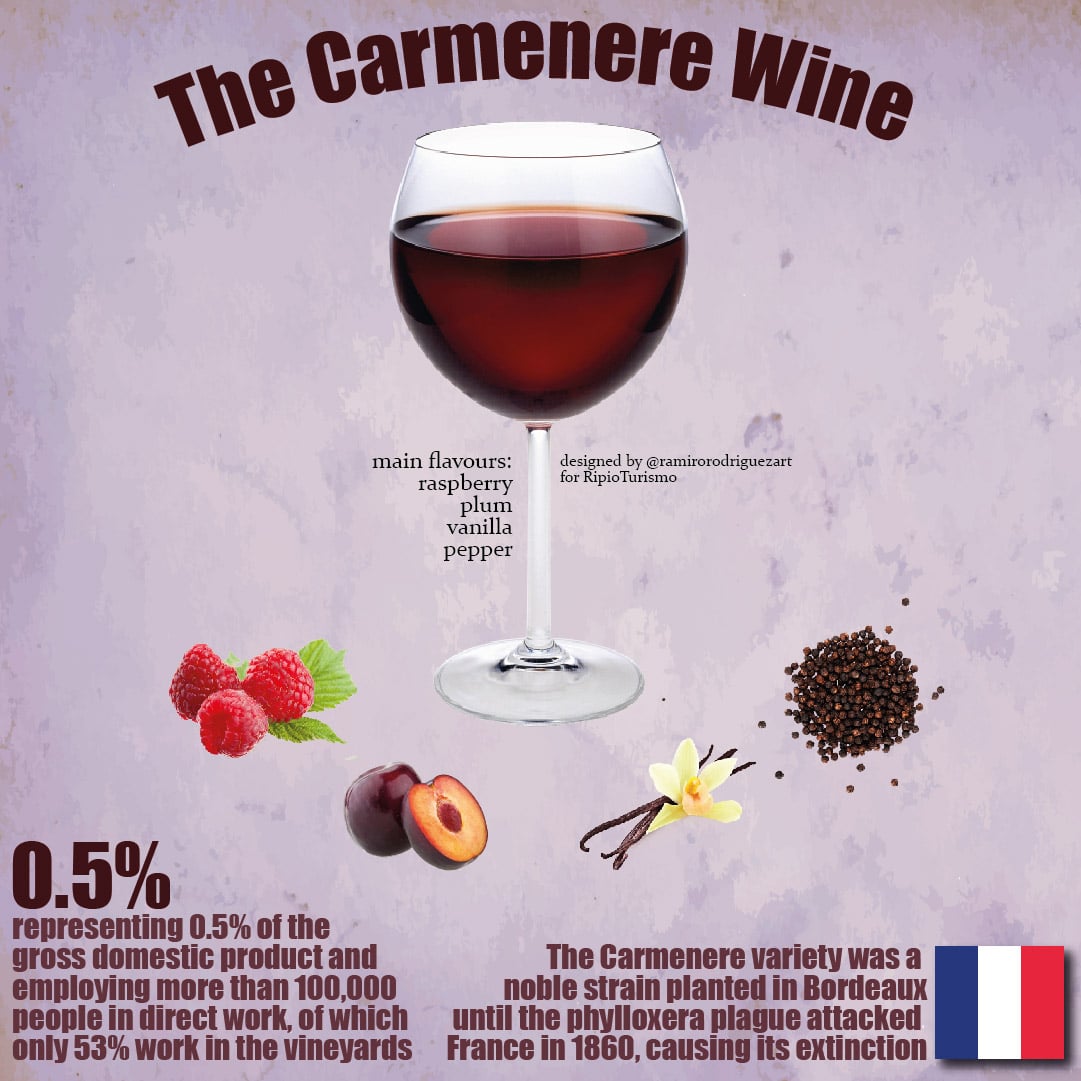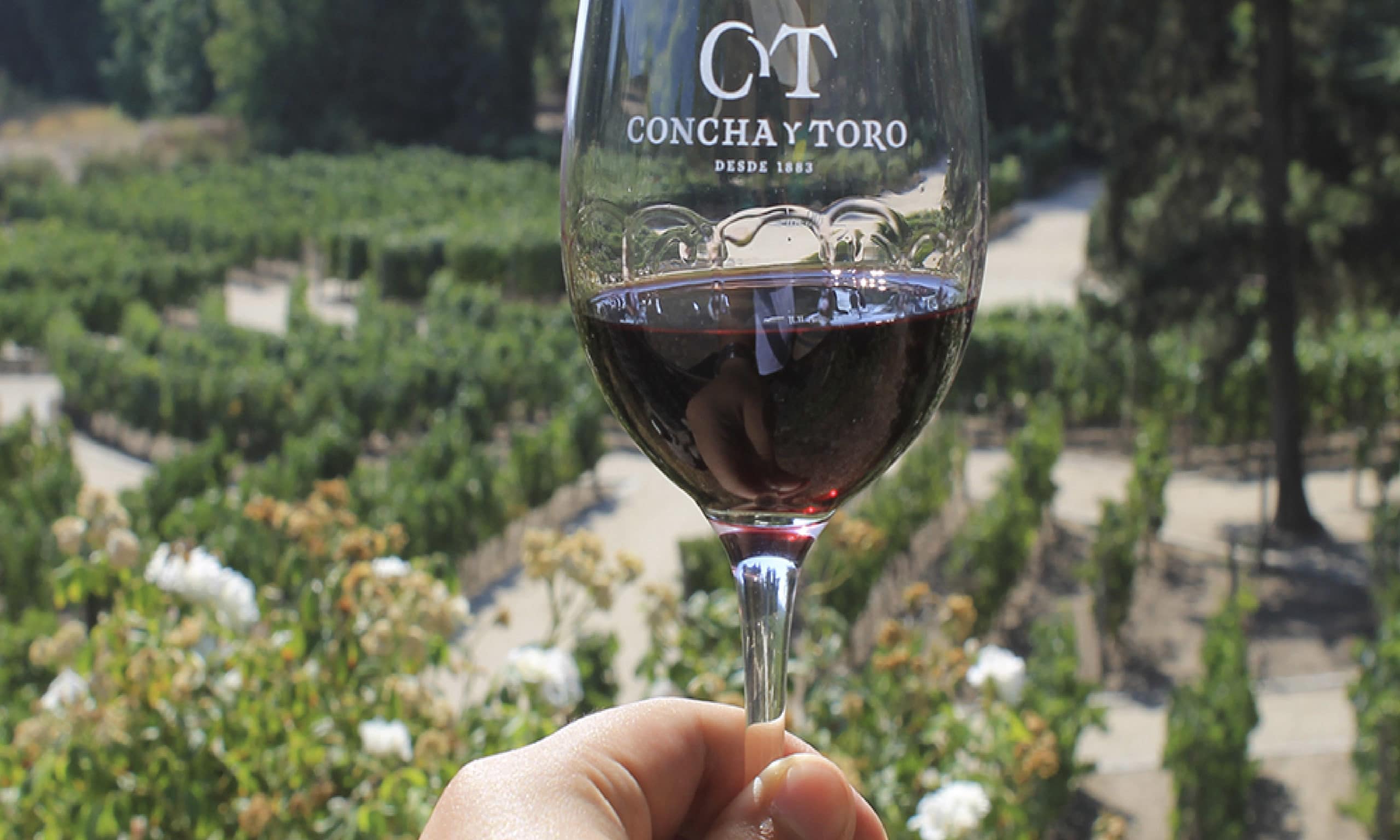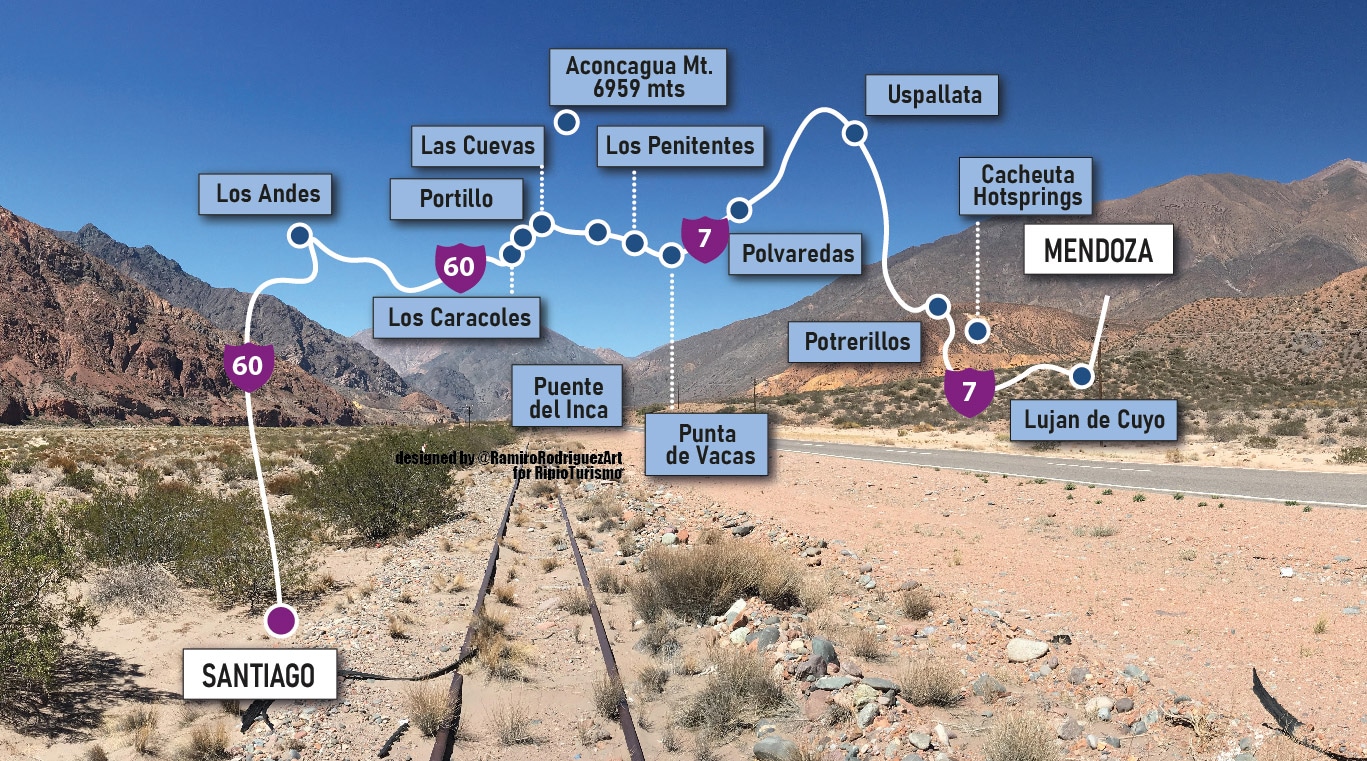The Carmenere: The chilean wine
Carménère is a grape variety originally from the Médoc region in Bordeaux, France. It belongs to the Cabernet family and was traditionally used to make dark red wines, often blended with Petit Verdot.
The name “Carménère” comes from the French word carmin, referring to the red color of its leaves before they fall. In Bordeaux, it was also called Grande Vidure, though this name is no longer used in Europe, especially in Chilean exports due to EU regulations.
Carménère is one of the six original red grapes of Bordeaux, along with:
-
Cabernet Sauvignon
-
Cabernet Franc
-
Merlot
-
Malbec
-
Petit Verdot
Today, Carménère is rarely grown in France. Its largest plantations are found in Chile, where around 8,800 hectares were reported in 2009. Chile now produces most of the Carménère wines available today. The local wine industry is also experimenting with blending Carménère with other grapes, especially Cabernet Sauvignon.

The Carmenere: a bit of history
Carménère is one of the oldest European grape varieties. Many believe it is the ancestor of better-known grapes. Some experts consider it a widespread clone of Cabernet Sauvignon.
The name Grande Vidure was used in Bordeaux to refer to a type of Cabernet Sauvignon that was once thought to be the origin of all Bordeaux red grapes. Some also believe that Carménère could be the ancient Roman vine Biturica, possibly named after the Bordeaux region at that time.
According to Roman author Pliny the Elder, Biturica came from the Iberian Peninsula (modern-day Spain and Portugal). Today, Carménère is blended with Sangiovese in Tuscany, under the name Predicato di Biturica.
Carménère was once widely planted in the Médoc and Graves regions of Bordeaux. However, it was severely affected by two major threats:
-
Powdery mildew
-
The phylloxera plague of 1867
Phylloxera devastated European vineyards, and Carménère was hit especially hard. For many years, it was thought to be extinct.
After the plague, winegrowers struggled to replant Carménère. It was hard to find and difficult to grow. The cold, damp spring weather caused a condition called coulure, which prevents grape flowering and reduces yields. As a result, growers chose more resilient varieties, and Carménère was largely abandoned in France.
The Carménère in Chile
Though nearly extinct in Europe, Carménère survived in Chile—by accident.
In the 1800s, Chilean winegrowers imported cuttings from Bordeaux. Some of these cuttings were Carménère, but they were mistaken for Merlot. Carménère’s similarity to Merlot helped preserve the variety for over 150 years without anyone realizing it.
In the 1850s, Bordeaux vines—including Carménère—were planted in the valleys around Santiago de Chile. Thanks to the dry growing season and the country’s natural barriers, Chilean vines remained healthy and free of phylloxera.
For most of the 20th century, Carménère was mixed in with Merlot during harvest, making up to 50% of what was labeled “Merlot.” This gave Chilean Merlot a unique flavor compared to Merlots from other regions.
Chilean growers thought this was a Merlot clone, calling it Merlot selection or Merlot Peumal (after the town of Peumo). But in 1994, a researcher from Montpellier’s Faculty of Oenology discovered that these vines were actually Carménère.
In 1998, the Chilean Ministry of Agriculture officially recognized Carménère as a separate grape variety.
Today, Carménère grows mainly in:
-
Colchagua Valley
-
Rapel Valley
-
Maipo Province
Carménère, the emblematic wine of Chile
Carménère has become a symbol of Chile. It is one of the few places in the world where this grape still thrives.
The Colchagua Valley is especially famous, producing about 50% of Chile’s Carménère. Here, the grape has re-emerged, producing wines with:
-
Deep color
-
Bright acidity
-
A touch of sweetness
These qualities make Chilean Carménère stand out on the world stage.
Colchagua Valley Vineyards: location map

Book an excursion to enjoy the wines of Chile in the Colchagua Valley
From Santiago, you can book the excursion to Santa Cruz and the Colchagua Valley
Wine Tours in Chile and Argentina
Wine Tours? If you´re looking for Wine Tours, we have a complete list of amazing wine tours in Chile and Argentina. Check more!
Visiting Santiago? check our best tours to enjoy Chile
#353 – Santiago, Atacama Desert & Easter Island – 9 nights 
#351 – Santiago, Torres del Paine and Atacama Desert – 9 nights 
#363 – Santiago, Atacama, Torres del Paine & Skorpios III Cruise – 12 nts 
#360 – Chilean Patagonia and Atacama Desert – 12 nts 
Tours in Chile with Argentina, Peru, and other destinations in Chile
It´s a nice list of four tours including the Santiago, Valparaiso and Viña del Mar in the itinerary. But, a great idea is to combine these places, with other destinations in Chile and why not… Argentina and Peru. Check some great options below:
#1052 – From Rio to Santiago via Iguazu, Buenos Aires and Atacama – 18 nts 
#1081 – Colorful Argentina, Chile & Peru – 17 nights 
#1004 – Argentina & Chile in 12 nights – Option IV – 12 nts 
#1090 – The Great tour of South America – 26 nights 
More tours to visit Chile
Want to visit Chile? Check our complete list of tours.
For more information, just contact us at info@ripioturismo.com
Thank you!















